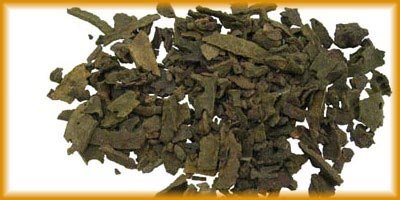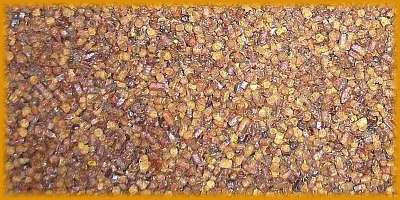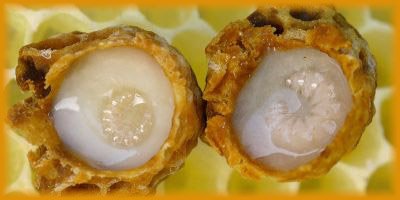
BY PRODUCTS OF THE HIVE
There are many benefits of having bees in our ecosystem. Aside from pollination, bees produce the following items that have become staples in our everyday life ...
HONEY

This is the obvious, fashionable product we get from bees. But do you know WHAT Honey is?
Honey bees form nectar into honey by repeatedly regurgitating and digesting it using their Honey Stomachs. Every time it is re-digested, moisture is removed from the nectar and natural chemicals and enzymes are added. At the very end, any excess moisture is removed by the bees and the final product we are left with is honey. That honey is stored as a food source in their wax honeycombs to be used by the hive for sustenance. Beekeeping practices encourage overproduction of honey so that the excess can be taken without endangering the bee colony.
Depending on where the bees get their nectar from the Honey will take a distinct taste. It can be tart, sour, sweet and it can even taste like the fruits and vegetables that bees go to for nectar! In fact, Beekeepers make sure to move the hives around regularly in order to allow bees access to many different nectar sources. This environmental variety creates a very versatile Honey that does not need to be blended as much. Some of the more common sources of nectar for Honeybees today are:
- These four are what we use for our Honey
- Canola
- Clover
- Alfalfa
- Wild Flowers
- These are sources used by other beekeepers
- Buckwheat
- Dandelion
- Crab Apple
- Blueberry
- Rhubarb
- Basswood
- Milkweed
- Thistle
- Fireweed
- Heather
- Golden Rod ... and more!
Once produced, beekeepers use many different methods to prepare Honey for commercial sale. Honey can be Comb Honey, Pasteurized, Crystallized, Strained, Ultrafiltered, Ultrasonicated, Whipped, Dried or it can be Raw or Organic Honey.
Honey is used as a natural sweetener in everything from everyday baking to breakfast cereals to tea and even beer!
On top of that, Honey has natural preservatives and both anti-bacterial and anti-fungal properties. Honey is now being used in the field of medicine as an antisecptic in the treatment of coughing, wounds and burns and in the food industry as a preservative! It has been found to be beneficial within the human body by helping it retain more calcium as well.
Full of nutrients and minerals, it helps your body get rid of toxins. Some People believe that it can be used as a weight loss aid and even as a mild laxative!
DID YOU KNOW ..... Honey was found in sealed containers in an ancient Egyptian tomb? It is currently kept in the Agricultural Museum in Egypt, inside two pots from New Kingdom tombs. The Honey is OLD! Researchers put the age at around 3,400 years of age, and the honey is reportedly still edible!
Who would have ever thought that something made by an insect could prove to be so useful, nutritious and important to human life?
BEESWAX

Wax is rendered from the capping removed during honey extraction. This produces a very high quality, light colored wax that has a faint and sweet honey smell. Wax that has not been used by bees, also called Virgin Wax, is white in colour. As wax is used in the beehive, it changes colour to a tan colour and then a light brown. If wax is exposed to high heat, it will discolour and look off.
We know beeswax is used to make Candles and Statues. But did you also know that Beeswax is used by the cosmetic, pharmaceutical, dentistry and food industries as well?
Yup, beeswax is used to make crayons, moisturizing lotions, cosmetics, polishes, deodorants, mascara, rouge, pill coatings, dental impressions and even as a coating to keep cheeses from spoiling!
Beeswax is also insoluble in water and resistant to many acids, but is soluble in most organic solvents such as ether, benzine, benzol, chloroform, and turpentine oil and after warming, in alcohol and fatty oils. Pure beeswax consists of at least 284 different compounds. Not all have been completely identified but over 111 are volatile. As a result, beeswax is known for being flammable and much like an oil fire, you don't pour water on beeswax that has been set on fire.
Wax can be stored for very long periods of time without losing its major characteristics as items from Egyptian graves more than 2000 years old have shown and it can be USED to store items for long periods of time.
Care has to be taken, however, as Parrafin is now being passed off as beeswax, or being mixed with beeswax. Parrafin is a petroleum based wax so it is synthetic in nature and cheaper to use. However it is dangerous because, when burnt, it releases carcinogenic smoke and soot. This isn't even mentioning the fact that Parrafin is made from Petroleum, which is a non-renewable resource and manufactured in ways that are unsafe to the environment.
It is difficult to distinguish beeswax from parrafin wax because parrafin wax is treated with bleach in order to give it a beeswax style look. You CAN spot a parrafin wax candle, though. Generally, if the candles are cheap, or if a given sample produces black smoke or soot, then stay away from it as it is a Parrafin candle.
DID YOU KNOW ..... An effective mix for coughing is to peel and finely chop one pound of onions. Add two ounces of honey and ¾ of a pound of brown sugar in two pints of water. Simmer gently over low heat for three hours. When cool, put in an airtight container and take four to six tablespoons a day.
PROPOLIS

Propolis is a word derived from the Greek language. "Pro", which means "before" and "polis", which means "city". Many sources attribute the word to the great thinker, Aristotle.
Propolis is the resinous substance bees collect from tree buds. It contains approximately 55 percent resinous compounds and balsam, 30 percent beeswax, 10 percent ethereal and aromatic oils, and 5 percent bee pollen. Propolis is also known as Bee Glue because it is used by bees to seal portions of the beehive or hive box, particularly around the entrance. Bee propolis contains antioxidants called flavonoids, which are thought to be the active ingredients. It also has inherent antiseptic qualities, so bees use it to line the interior of brood cells where the Queen Bee will lay her eggs. It is also found, in small quantities, in honey. In a beehive, Propolis prevents diseases and parasites from entering, and it inhibits bacterial growth.
The Medical Industry has known about Propolis for a long time and we use it as a natural remedy for wound infection and other illnesses. Propolis is available in many forms including tablet, ointment, powder, lotion and more and it is available as a nutritional supplement in health food stores. Research shows it offers antiseptic, antibiotic, antibacterial, antifungal, and even antiviral properties. It is so powerful in action that it is often referred to as the Russian Penicillin, in acknowledgement of the extensive research the Russians have performed on this bee by product. Propolis demonstrates strong antimicrobial properties against various bacterial and fungal infestations. Even streptococcus bacteria has been shown to be sensitive to Propolis.
Modern scientific studies indicate that those who take propolis regularly escape winter colds, sore throats and seem to develop a natural immunity to common viruses including the various strains of flu. Propolis is believed to be effective against many ailments including infection of the urinary tract, burns, gout, open wounds, sinus congestion, colds, influenza, bronchitis, gastritis, intestinal infections, ulcers, eczema eruptions, pneumonia, stomach viruses, headaches, warts, conjunctivitis, and hoarseness. In Japan, tests are being performed to see whether or not Propolis can be used to treat tumors! These claims, however, have not been confirmed by any major medical group and so should be taken with a grain of salt.
Consult with your doctor prior to ingesting or using Propolis to see whether or not the way you intend to use it is safe. In particular, Propolis shouldn't be applied to the eye area as repeated use there may leave you prone to develop an allergy.
We do not collect or sell Propolis. Contact your local health food store.
DID YOU KNOW ..... Propolis was used as an official drug in London in the 1600s and marketed as a lozenge, cough syrup, toothpaste, mouth rinse and even for the varnishing of Stradivarius violins!
BEE BREAD

As hard as it is to believe, Bee Bread is also a byproduct of the hive that human beings gain use from.
Bee Bread is actually Bee Pollen that has been packed by bees into granules, with added honey or nectar. But it's not just that. An enzyme (saliva) is added to prevent germination, metabolizing the pollen for food, thus preserving the bee pollen benefit nutritionally for human beings. And that is how we get Bee Bread.
Bee Bread is actually what is fed to all of the Larvae and Adult drones within a hive by the nurse bees. A full colony of bees can actually pull in as many as 50,000 loads of pollen a day.
Many health experts refer to Bee Bread as a complete food. It has been used as a supplement for thousands of years by many cultures all over the world. It is mentioned, along with other bee products (like Honey), in the Bible, the Talmud, the Qur'an, and has even been referred to in ancient Oriental scrolls of the Far East.
Bee Bread was used by the Ancient Chinese and Egyptians as a dietary supplement for centuries. It has been called many things, from a fountain of youth to a "food of the gods." The Greek physician Hippocrates, sometimes called the father of modern medicine, used it as a healing substance over 2,500 years ago. It is rich in vitamins, especially B vitamins, and contains trace amounts of minerals, elements, amino acids, and enzymes. The pollen is composed of 55% carbohydrates, 35% protein, 3% minerals and vitamins, 2% fatty acids, and 5% other substances. It contains very small amounts of many substances considered to be antioxidants, including betacarotene, vitamins C and E, lycopene, selenium, and flavonoids. It is available as gelatin capsules, tablets, and granules. Capsules and tablets generally contain 500-1000 mg of bee pollen.
Some people see Bee Bread as a performance enhancer in sports and a general health enhancer and that it increases Oxygen uptake and accelerates recovery time in training, though there her been no conclusive medical research to support these claims. Still, rumours swirl that many Olympic athletes use and swear by Bee Bread as a great way to help boost performance. In fact, itis even used by Mega Chains like Booster Juice who use Bee Bread in their products and advertise its effects as "Energy Boosting".
Although individuals with allergies may experience an allergic reaction due to ingesting Bee Bread, it is believed that Bee Pollen therapy is a good way to circumvent the allergy season as it may help reduce sensitivities. Medical research has shown that it does not interact negatively with other drugs, vitamins and supplements. Side effects reported were mild gastro-intestinal irritation and mild diarrhea. As always, it is best to consult your physician prior to taking any.
For more information on Bee Bread, you could also pick up a copy of Carlson Wade's book titled: The World's Only Perfect Food: The Bee Pollen Bible.
We do not collect or sell Bee Bread. Contact your local health food store.
DID YOU KNOW ..... You can actually go on a Bee Pollen Diet!
ROYAL JELLY

Royal Jelly is a honey bee secretion that is used in the nutrition of larvae, as well as adult queens. It is produced specifically within special glands in the heads of the Worker Bees and is fed to all larvae within a colony for the first 3-5 days of life.
Royal Jelly is what a Queen Bee is exclusively fed throughout her life and it is what allows her to develop fully functional and mature reproductive organs, unlike Worker Bees, who are born infertile.
Royal Jelly contains 8 essential amino acids, vitamins B1, B2, B5, B6, B12, water, protein, folic acid, and simple sugars. It is said to stimulate neural stem cell growth in the brain. There is evidence that it can lower cholesterol, heal wounds and that it has antibiotic and anti-inflammatory benefits. It can be taken as a supplement and reportedly helps with bone fractures, kidneys, liver, bronchial asthma, pancreatic disorders, stomach ulcers, insomnia, skin disorders, mental fatique, anemia and depression. It contains gamma globulin, known to stimulate the immune system and fight off infections.
It can also be found in some beauty products. Individuals with allergies to Bee Stings and Pollen may need to stay away, however, as allergic reactions from hives to full scale anaphylaxis have been reported due to ingesting Royal Jelly.
We do not collect or sell Royal Jelly. Contact your local health food store.
DID YOU KNOW ..... Royal Jelly is actually a delicate liquid! As soon as it’s removed from its sterile environment it can get infected. In order to be able to preserve and transport Royal Jelly you have to refrigerate or freeze it!
